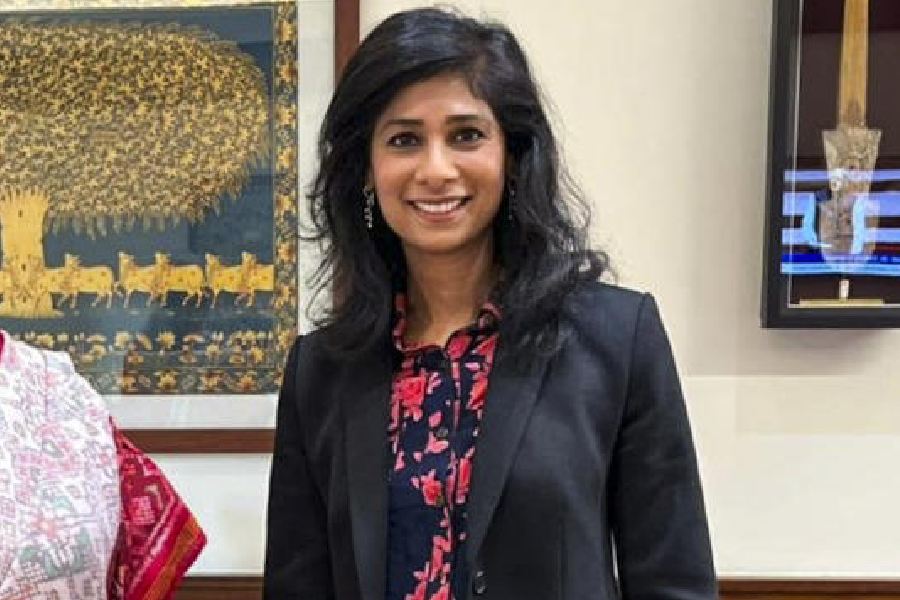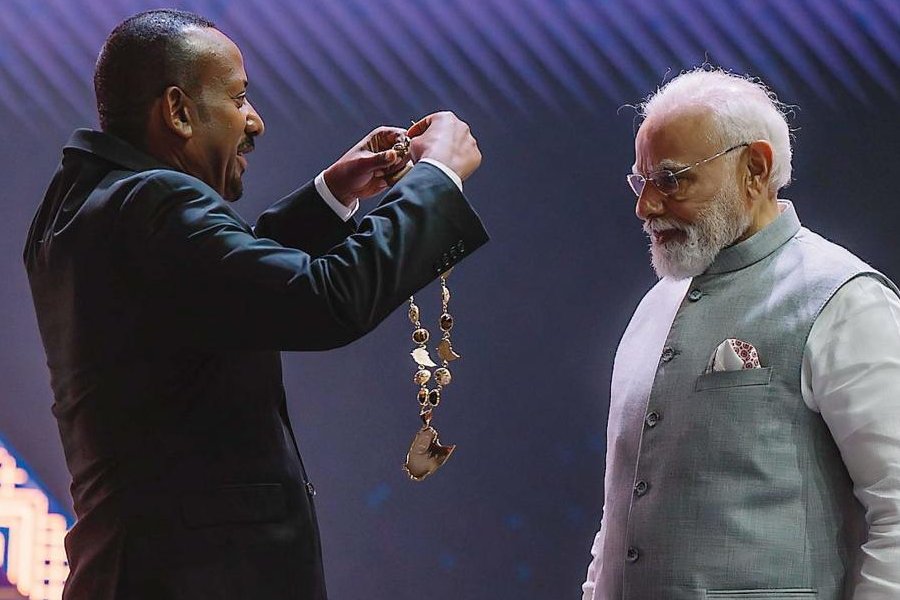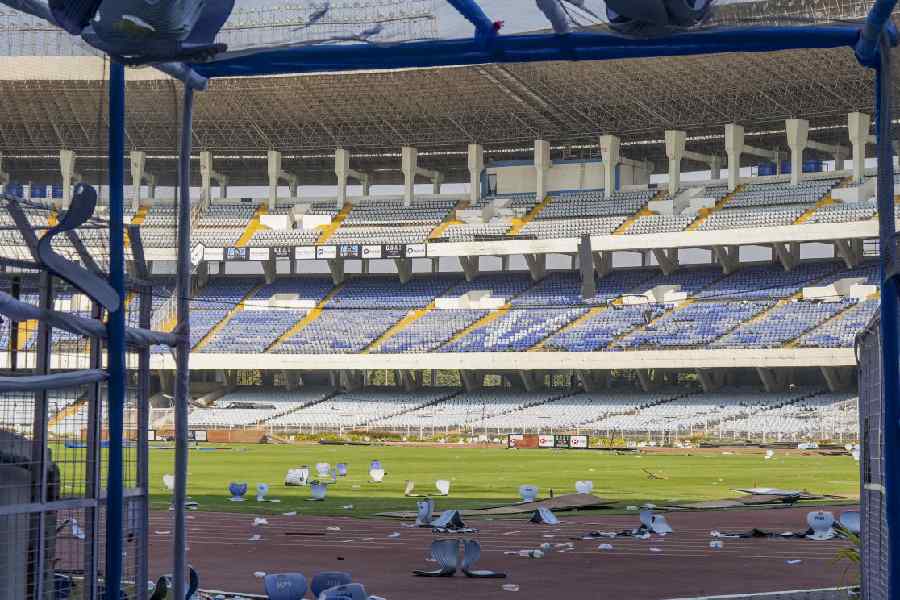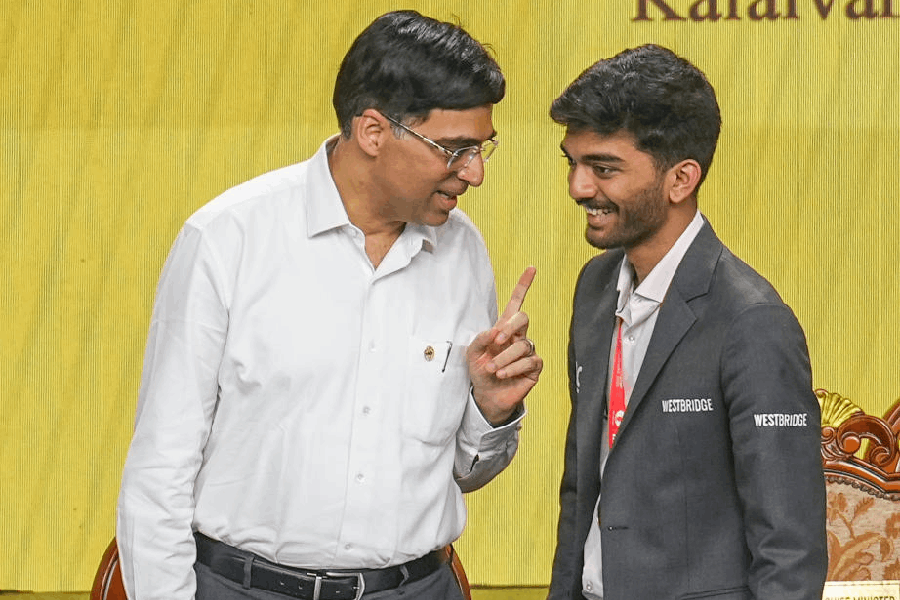 |
The song is familiar, yet different. Over 20 years ago, the Madhuri Dixit number Dhak dhak karney laga became such a hit that it was on almost every Bollywood lover’s lips. The song is now playing in autorickshaws, discotheques and homes — but it’s not the one that was scored by composers Anand-Milind for the 1992 film Beta.
Bhushan Kumar, head of the music label T-Series, which held the rights to the song, suggested to director-producer Rohan Sippy that he re-invent the song for his 2013 film Nautanki Saala. Sippy accepted the rights without knowing what he was going to do with the iconic track with heaving bosoms that had revolutionised Hindi film choreography.
Composer Mikey McCleary jumped to his rescue, giving the Udit Narayan-Anuradha Paudwal number a different vibe and four new voices — of Geet Sagar, Bruno Carvalo, Santosh Sawant and Saba Azad. The promotional music video went a step further, moving from the original diva to three new faces — Evelyn Sharma, Pooja Salvi and Gaelyn Mendonca. And suddenly India was going Dhak dhak again.
The Hindi film industry has discovered the joys of giving new touches to old music. “Recycling music and releasing new versions of old hits are the new trend,” Rajjat Barjatya, producer, managing director and CEO, Rajshri Media, stresses.
Sippy would agree. After all, he’d got the London-based group TrickBaby to remix Mehmood’s title track from the 1976 film Sabse Bada Rupaiya with a rock-and-roll beat while retaining his voice. The song was filmed for Abhishek Bachchan’s introduction scene in Bluffmaster (2005). Sippy points out that these songs work well for filmmakers because they have the double advantage of being a certified hit and evoking instant recall.
 |
“So you are not floundering in the dark wondering if your song will catch the audience’s fancy. And you don’t have to promote it aggressively because the resonance of the original immediately brings a remembering smile,” reasons Sippy, who jumped on the bandwagon because he was both short of time and money during the filming of Bluffmaster, which his father Ramesh Sippy wanted wrapped up in 50 days.
Director Sajid Khan also went down melody lane with composers Sajid-Wajid, who revived two old songs for Khan’s Himmatwala remake. Khan says he couldn’t visualise his film without the two tracks from the 1983 original. And he had the blessings of the original composer of the songs, Bappi Lahiri, who was on a high after composers Vishal and Shekhar tweaked his version of the 1983 Mawaali hit, Ooi amma. The new song Ooh la la in The Dirty Picture (2011) sung by Lahiri became an instant hit.
“Everyone from six to 60 in India and South Africa, the US and Thailand, is dancing to the tunes of Ooh la la. It’s the biggest hit in my four-decade career in Hindi cinema,” Lahiri says.
Some of those involved with rediscovering the oldies stress that they try not to tamper with the essence of the original. Sajid Khan says he was categorical about not disturbing the original melody and about using Amit Kumar (with Shreya Ghoshal) for the song Nainon mein sapna, which was sung by his father, Kishore Kumar, with Lata Mangeshkar, in the original Himmatwala.
“Had Amitda not sung (the song), I would have dropped it,” he insists.
Three decades ago, for this song Lahiri had filled Mehboob Studio with 40 percussionists playing everything from the tabla to the matka, apparently drawing a surprised exclamation from Lata Mangeshkar.
Last November, around 100 musicians gathered at another Mumbai recording studio, Sahara, playing everything from the cello and the violin to the double bass and the vibraphone. Their music was pumped up with electronics, one antara was edited and some minor changes made as Nainon mein sapna was revived.
Sajid-Wajid also point out that they were not going to tamper with Lahiri’s superhit. “We’ve just given the song a new sound and a new voice. We had the rights to the original recording and could have used Kishore Kumar’s stem, but preferred to go with his DNA,” smiles Wajid.
Speaking of DNA, Amit Kumar had earlier sung a remixed version of Kishore’s Bachna ae haseeno for Sujoy Ghosh’s Jhankaar Beats (2003). Five years later, he was approached by Vishal-Shekhar for a retake and recommended younger brother Sumit for the Ranbir Kapoor starrer Bachna Ae Haseeno (2008).
He admits he was surprised when told that Sajid-Wajid wanted him to sing one of his father’s biggest hits, but says he was up for the challenge. The gamble paid off, the song was a hit within five days of its release. Amit was flooded with calls and messages on his fan page.
“But along with the compliments came the criticism,” he sighs. “Baba was 54 when he sang Nainon mein sapna. I’m just seven years older at 61 and also sound young. Yet, the detractors continue, even though it is foolish to compare.”
 |
| SONG SUNG AGAIN: (From top) Stills from Dum Maaro Dum, Nautanki Saala and Himmatwala |
Sippy too was deluged by a hate wave for Deepika Padukone’s item number in Dum Maaro Dum (2011). Pritam had remixed the evergreen Hare Rama Hare Krishna anthem of 1971, and Jaideep Sahani had rewritten the lyrics to take listeners into a world that had moved on. Dev Anand loyalists, however, were outraged.
Sippy defends the move, pointing out that these songs give the originals a new shelf life. “Mehmood’s daughter thanked me for bringing her father’s song back,” he says. He also argues that it is an established trend in the West. “Our Constitution gives us the right to criticise, but it’s time we grew up,” he asserts.
The last word comes from Mikey McCleary, who abhors the word “remix”. He says only the lullaby in the 1988 film Tezaab, So gaya yeh jahaa in Nautanki Saala is a remix because Sippy wanted him to retain Nitin Mukesh’s voice. “I re-invent songs that are being appreciated today. What’s wrong with that?” he asks. “They introduce our youngsters to old classics.”










